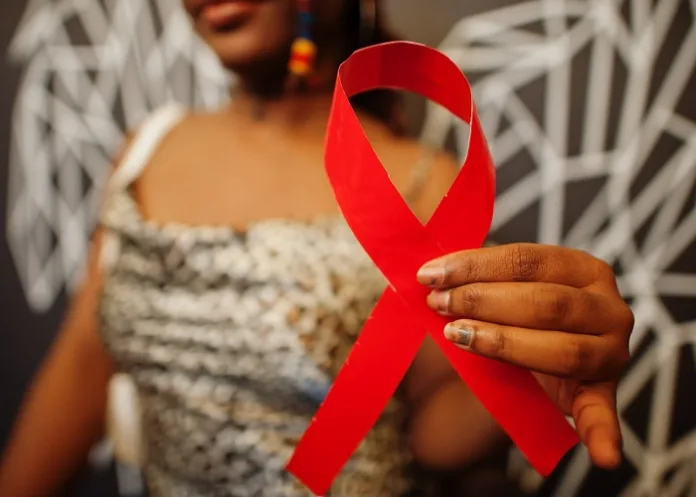Around 50 000 people died of HIV-related causes and around 7.8m were living with HIV in South Africa in 2023 – but only 5.9m were on treatment, or one in four, according to new estimates from Thembisa, the leading mathematical model of HIV in the country.
The estimates, writes Marcus Low in Spotlight, also show that despite the impressive HIV testing figures, a subset of people started taking antiretroviral therapy far later than is ideal.
The new figures were particularly keenly anticipated since they factor in numbers from both Statistic SA’s Census 2022 and the Human Sciences Research Council’s Sixth South African National HIV Prevalence, Incidence and Behaviour survey.
These statistics also, for the first time, include an estimate of people disengaging with treatment. It is calculated that around 1m people with HIV who have previously taken antiretroviral treatment were not taking the treatment in mid-2023. Of the roughly 2m who are not on treatment, half were thus previously on treatment.
This suggests that helping and supporting people to start and stay on treatment should be a high priority for the Department of Health.
Around 237 000 people started taking antiretroviral therapy in 2023 in South Africa.
Concerningly, more than 46 000 adults started taking treatment only once their CD4 counts had dropped below 200 cells per cubic millimetre of blood. A CD4 count of less than 200 indicates a compromised immune system and is associated with a higher risk of co-infections like tuberculosis.
These numbers suggest that, despite South Africa’s impressive HIV testing figures, a subset of the population is falling through the cracks and starting treatment far later than is ideal for their health.
New infections declining
The Thembisa estimates also show about 149 000 new HIV infections in 2023. Here, as in most areas, the long-term trend is downward, with new infections having been above 500 000 per year around the turn of the century and declining ever since.
As with other indicators, the sex differences are stark. There were roughly 91 000 new HIV infections in women aged 15 and older, compared with 50 000 in men in the same age group.
Since the number of new HIV infections is still higher than the total number of deaths in HIV+ people, the absolute number of those with HIV is still rising and is anticipated to keep rising for some years to come.
One indicator that the HIV response in South Africa is generally heading in the right direction is that the number of people starting HIV treatment is significantly higher than the number of new infections.
The ratio between these two numbers was estimated at 1.6 in 2023 – in other words, for every 10 people newly infected, 16 were started on treatment.
95-95-95 indicators
According to UNAids HIV targets, also included in South Africa’s National Strategic Plan for HIV, TB and STIs 2023-2028, countries should aim for 95% of people with HIV being diagnosed, 95% of those diagnosed being on treatment, and 95% of those on treatment having viral suppression, all by 2025.
South Africa is on track to meet the first of these three targets with an estimated 95.4% of people with HIV in 2023 having been diagnosed.
On the second target, performance is much weaker. An estimated 78.7% of people who have been diagnosed with HIV were on treatment in 2023. In other words, more than one in five who know they are HIV+ are not taking treatment. (Note: If you expand the definition of the second 95 target to include both diagnosed and undiagnosed people then you get the 75% treatment coverage figure quoted near the top of this article.)
On the third target, South Africa is doing well, with an estimated 91.3% of people who are on treatment being virally suppressed.
However, if you throw the net wider and ask what percentage of people with HIV – not just those on treatment – are virally suppressed, the number plummets down to 68.6%. (These figures are for a viral load threshold of 1 000 copies per millilitre of blood. If a threshold of 400 is used, the estimates are 89% and 66.8% respectively)
Life expectancy
The latest Thembisa figures also indicate that life expectancy in South Africa has continued its upward trend after a blip in 2020 and 2021 caused by the Covid-19 pandemic.
The broader picture of the past 30 years show a clear decline caused by the HIV pandemic, reaching a low point of 53.6 in 2004, followed by a steady recovery as antiretroviral treatment became available and fewer and fewer people died of HIV.
Life expectancy in 2023 was estimated at 65.9 – 62.3 for males and 69.7 for females.
Note: This article is based on outputs from Thembisa version 4.7 – published at the end of March 2024.
See more from MedicalBrief archives:
HIV cases drop in SA, but so does condom use
HIV prevention pill uptake in SA climbs to 1m users

